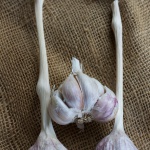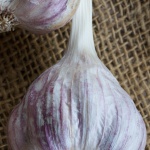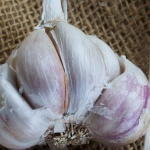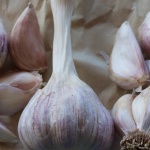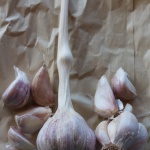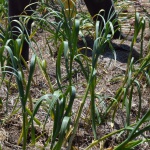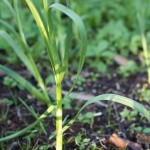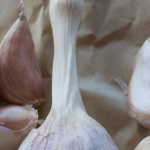Italian Pink
Subtropical Group Softneck – Non-bolting
This is one of the main cultivars grown mainly in WA and Queensland. Italian Pink was named and then grown for more than 15 years by Danny Gleeson in Swan Hill, nothern Victoria. He got it from his father-in-law in 1998, calling it Italian Pink after his father-in-law’s country of origin, and the colour of the bulb. Danny thinks that it may be derived from Glenlarge, a cultivar developed Gatton Research Station in Queensland. This may also be the same as, or the same origin as, Italian Red.
General Information
| Other Names | None known |
|---|---|
| International Names | None, this is an Australian cultivar |
| Flavour | Very good. Moderate to hot when raw, with a rich, sweet, spicey flavour. Flavour improves if the bulbs are kept for a few weeks after curing and before use. |
| Storage | Reasonable, 7-9 months |
| Growing location | Grows best in Central to Southern Queensland, Northern NSW and Central WA. But will also do well in more southern regions as long as it isn't too cold and wet. |
| Growing requirements | Thrives in short day regions which experience reasonably cold winters. Enjoys heat early in spring and will tolerate some humidity. Day-length neutral. Does not like cold and wet winters. |
| Planting and harvest | Early to plant and early to harvest. |
Bulb
| Shape | Tear-drop shaped medium sized bulbs. 5-6 cm. |
|---|---|
| Skin colour and texture | White with pink or purple shades and fine stripes. Fairly coarse texture. |
Clove
| Number and layout | 12-15 cloves in two (occasionally 3) layers. |
|---|---|
| Size and shape | Elongated cloves, 4 cm tall x 2.5 cm wide, with concave inner face. |
| Skin colour and texture | Pale pink to white skins, fine and can be hard to peel, although this improves with storage. |
Plant
| Size and shape | Medium height although slender and is prone to falling over near harvest. |
|---|---|
| Leaves | Thin, yellow-green, quite widely separated. |
| Young plants | Very quick to emerge, and grow quickly. Distinctly different to most other garlics. |
| Matures | Early, and goes from being nearly ready, to ready to harvest quite quickly. |
| Scape | No scape |
| Umbel and beak | No umbel. |
| Bulbils and flowers | No flowers but often forms 1-3 bulbils in the pseudostem. These are 1-1.5cm in diameter. |
